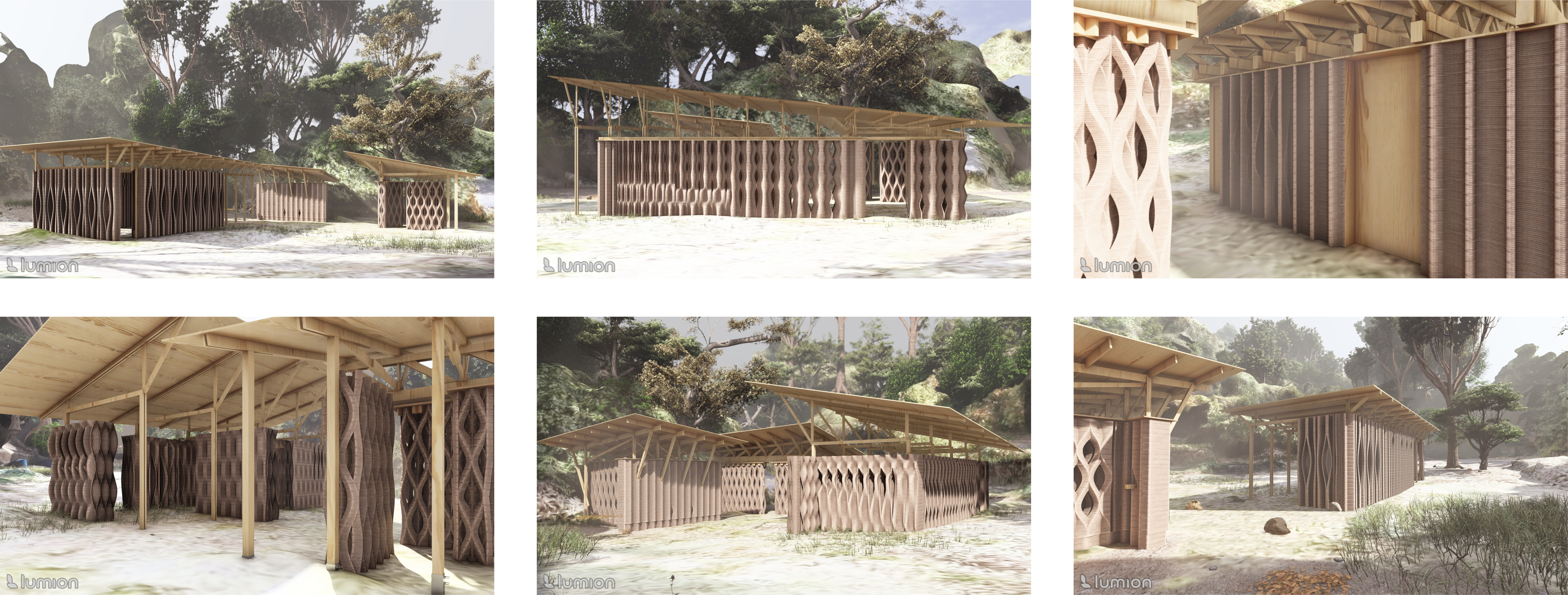After inventing and modelling periods, testing them, and manipulating them for performative reasons, we are now ready to jump into the design of a small architectural intervention. Except for the roof structure that we will be provided with, you are asked to design an extension to the existing space of the Forest Campus, defining its use and its climatic behaviour.
One difficulty of this exercise is that only half of it will be printed this year; the rest will be achieved (with possible modifications to the design) in 2026 by the next generation of 3dPA students.
One important learning outcome of the year is the “super wall.” This means that your proposal needs to contain an intelligent rectilinear wall of 7 m in length and 2.5 m in height.
We will work with Xavier Aguilo and Marti Riera from Socotec to design a climatic strategy that corresponds to the local climate and orientation, but that also takes advantage of the design potential of 3D printing to create wall solutions that achieve climatic control on several levels, such as wall width and sections for thermal transmission, the penetration of natural light, the ventilation within the walls, and the built volume.
From a programmatic point of view, you need to respond to the existing condition of the campus, which contains an enclosed and climatically controlled space and a series of covered and open corners with a small workshop space. The Forest Campus aims to be both a house demonstrator and a comfortable working environment for 3D printing with earth.
The proposal will be judged as successful considering their response to the following criteria:
- Intelligence of the climatic behaviour (daily and seasonal)
- Programmatic proposal
- Integration within Forest Campus
- Feasibility: printing strategy
- Proposal use of 3D printing
There are several givens for the project
– maximum 14 metres of printing
– one enclosed room
– guidelines for foundations – given in class
– guidelines for roof structure – given in class – balloon frame-like roof with one or two pitches – roof overhang of minimum 1m
– forms a coherent ensemble with existing prototypes To-Tei
– 3d printed walls need to be protagonists





